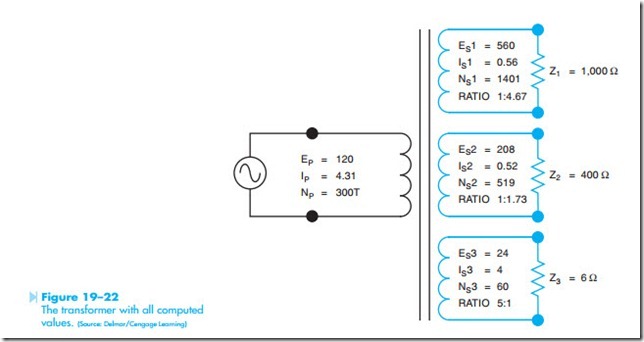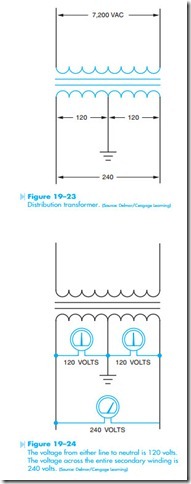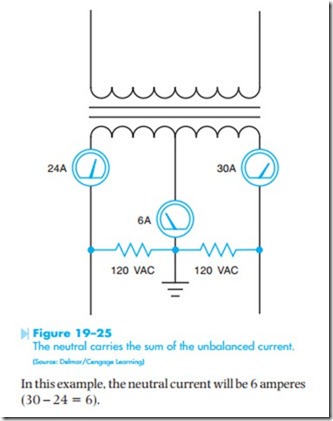DISTRIBUTION TRANSFORMERS
A very common type of isolation transformer is the distribution transformer, Figure 19–23. This trans-former is used to supply power to most homes and many businesses. In this example, it is assumed that the primary is connected to a 7,200 volt line. The secondary is 240 volts with a center tap. The center tap is grounded and becomes the neutral conductor. If voltage is measured across the entire secondary, a voltage of 240 volts will be seen. If voltage is measured from either line to the center tap, half of the secondary voltage, or 120 volts, will be seen, Figure 19–24. Loads that are intended to operate on 240 volts, such as water heaters, electric resistance heating units, and central air conditioners are connected directly across the lines of the secondary. Loads intended to operate on 120 volts connect from the center tap or neutral to one of the secondary lines. The function of the neutral is to carry the difference in current between the two secondary lines and maintain a balanced voltage. In the example shown in Figure 19–25, it is assumed that one of the secondary lines has a current flow of 30 amperes and the other has current flow of 24 amperes. The neutral will conduct the sum of the unbalanced load.


